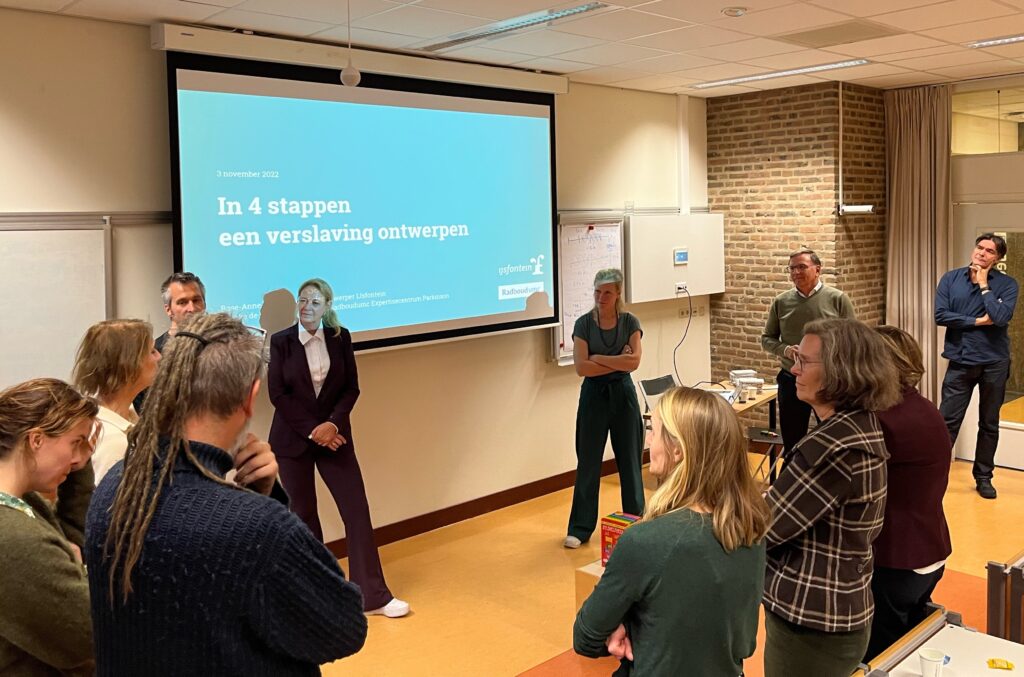14 November 2022
You’re going to do things completely different now. For real. Sports shoes on, and go.
You look at your shoes. They are as white as when you bought them in the shop. Your condition is lousy. Yesterday, a lady even stood up for you on the train when you ran into the compartment panting after a sprint.
No, you’re really going to exercise now. Running through the woods like a gazelle. You want to know what everyone means by that runners’ high.
But then…
You get home. Dead tired. It’s dark and raining. Oh well, who are you kidding. You settle down on the sofa with the new episode of Homeland. The bowl of potato chips becomes the whole bag.
Recognisable?
You’re not the only one. Exercise is important, everyone knows that. Yet over half of the Dutch do not move enough. The norm for adults is at least 150 minutes of exercise per week. And the more, the better.
Especially for people with Parkinson’s disease
This is because it has a positive impact on the symptoms of the disease. At the same time, those same symptoms make exercise increasingly difficult. This dilemma is what the fifth IJscursie is about, which takes place at the Parkinson Expertise Centre at the Radboudumc in Nijmegen.
Speakers are Bas Bloem, professor of neurological movement disorders and specialist in this field, Rose-Anne Dotinga, behavioural designer at IJsfontein and Nienke de Vries, researcher at the Radboudumc Parkinson’s Expertise Centre.
They talk about Stepwise. An app that motivates people with Parkinson’s disease to exercise more. It is a follow-up to the Park-in-Shape studie, in which the Radboudumc also already collaborated with IJsfontein. An article on this was published in Lancet Neurology in 2019. The app was developed on behalf of Radboudumc Nijmegen.
How does Stepwise work?
Just as you decide to sit on the couch anyway, ‘knowing it’s good for you’ is often not enough for someone with Parkinson’s disease to get moving either. What does motivate is the feeling that they can contribute: to research and to increasing knowledge about their disease. This insight was behind the development of the app Stepwise. The aim of the app: to make exercise a new habit.
How did we achieve that goal?
Inspired by the hook-model , we used several strategies. From concrete exercise tips (put your shoes on the doorstep!) to social talk. In the app, participants chat with their virtual coach Bas Bloem. He motivates them to move more and indicates the value of participating in the study. Moreover, the app counts the number of steps you take and gives you a personal weekly goal.
A participant about Stepwise:
Thanks to Stepwise, I feel very healthy and walk very easily. My stride length has been extended and my walking speed feels like old times. Friends and acquaintances wonder in amazement, ‘when we see you walking, we don’t see a Parkinson’s patient.’
Around one hundred and seventy people with Parkinson’s disease are now using the app, of whom twenty-five have completed the study. As many as twenty-three of them continue to use the app.
What’s next?
Bas Bloem already hints at the sequel to Stepwise: the Slow-SPEED project. This will be the world’s first large-scale study into a disease-modifying treatment in the period preceding Parkinson’s disease. This project, again in collaboration with IJsfontein, could form the basis for effective prevention of Parkinson’s disease. By doing so, the rapid global growth in the number of people with Parkinson’s disease can be curbed.
A promising end to our last IJscursie, which ends at the Culture Café. To which all participants – how could it be otherwise – walk. In the pouring rain.
But thanks to all those inspiring walking stories, that rain never felt so insignificant as today.

